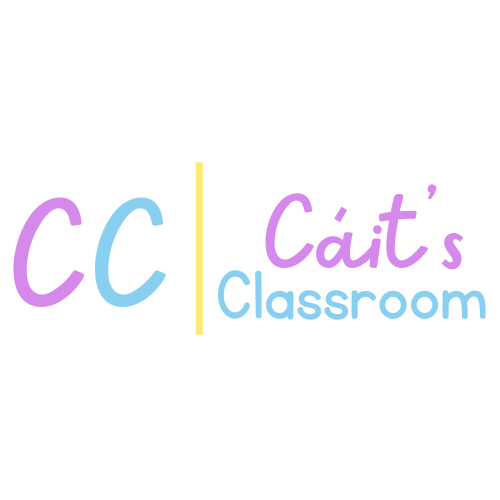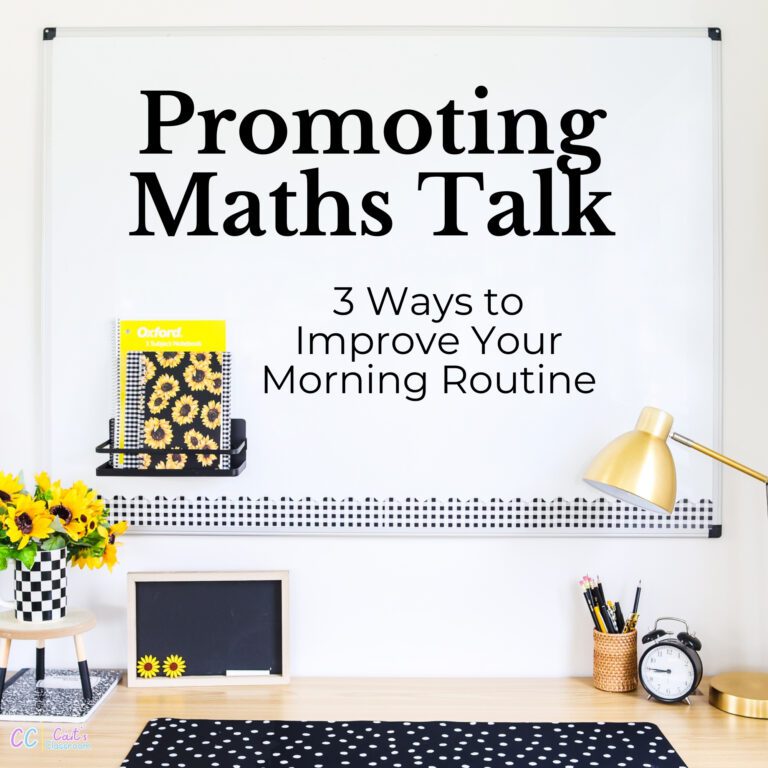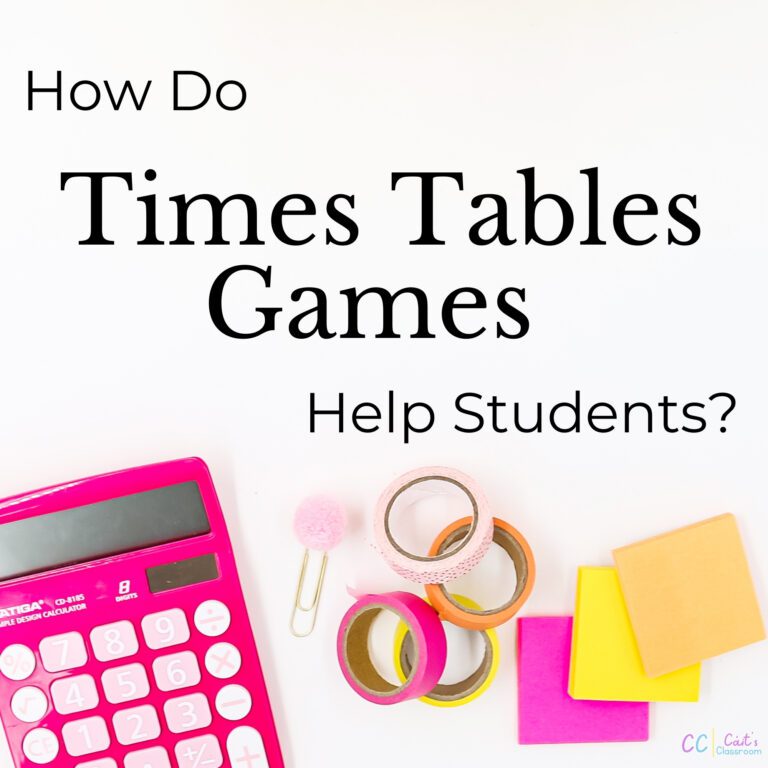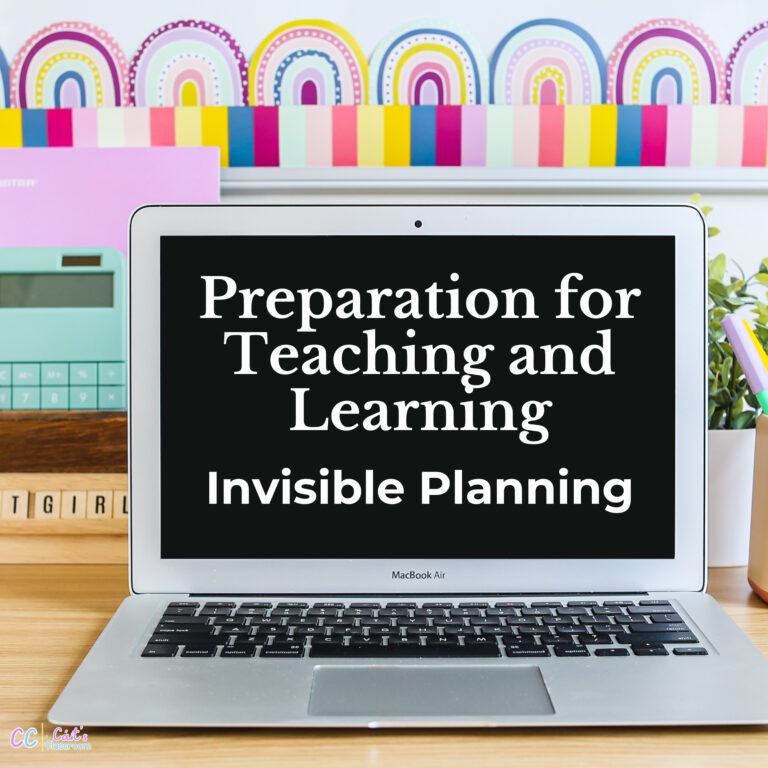Navigating the new Primary Mathematics Curriculum as an NQT may seem daunting at first. You got the crash course in college, but now you’re tasked with actually teaching 3rd – 6th class maths. I hear you – “What are those elements again? What’s all this about a progression continuum? Am I supposed to be including key competencies in my planning?!”
As a newly qualified teacher, it’s natural to feel a bit overwhelmed by these changes to primary school mathematics, but remember that you are not alone on this journey! I’ve been in your shoes, graduating around the time of the new Primary Language Curriculum, and I’m here to help you navigate the changing landscape of primary mathematics.
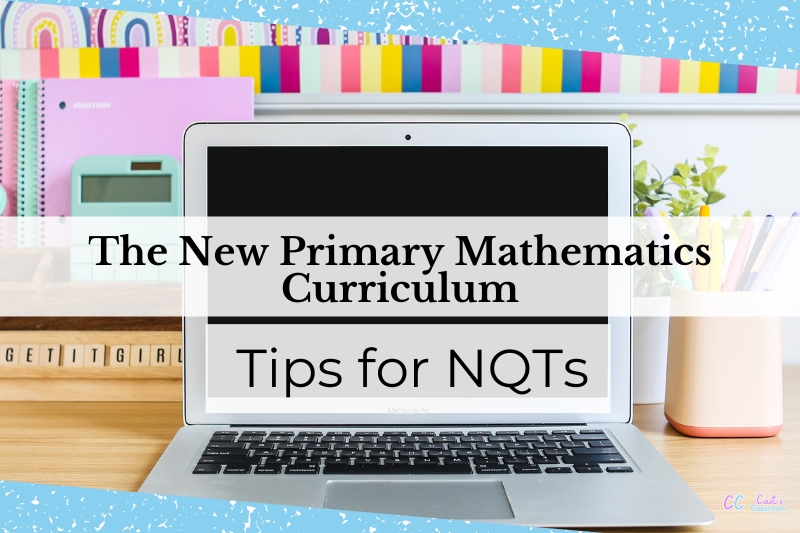
Here are my top 3 tips for getting to grips with the new Primary Mathematics Curriculum as an NQT:
Tip #1: Make Friends With The Progression Continua
The progression continua are your new besties! They’re going to help you make sense of the broad learning outcomes in the new Primary Mathematics Curriculum. I see you glancing at the strand units, noticing there’s only one or two learning outcome examples, and thinking, “Where on earth do I even begin to teach this!?” That’s where the progression continua come in! They’re like Google Maps for maths teaching, guiding you through a sample learning journey and making multiple stops at key elements like ‘understanding and connecting’ and ‘applying and problem solving’.
Take the measuring strand unit, for example. In 5th and 6th class, students are supposed to ‘find, interpret, and deduce measures experimentally with increasing precision.’ While I personally love the broad learning outcomes of the new maths curriculum, I totally get how this can feel overwhelming for a newly qualified teacher just starting out. The progression continua break down this outcome into manageable parts, such as justifying the size of metric units selected when calculating measures like length, weight, and capacity. My best advice – start with the progression step that sounds most like the average learner in your classroom and differentiate from there using the steps above and below.
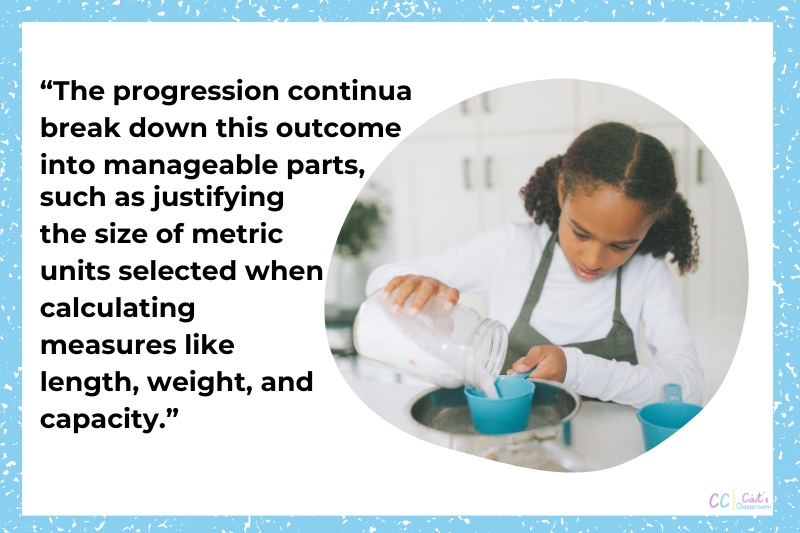
Tip #2 Keep Maths Playful
Encouraging playfulness is one of the five key teaching practices highlighted in the new Primary Mathematics Curriculum. Playful learning experiences are crucial for primary school mathematics because they turn abstract concepts into fun, meaningful, and hands-on activities. Plus, promoting playfulness helps foster a positive attitude towards maths, motivating students to participate and succeed.
I know what you’re thinking – “That’s great for younger classes, but how do I make maths playful in the senior side of the school?” For older students, playfulness can be integrated through more complex and collaborative activities like maths games, puzzles, and real-life problem-solving scenarios.
Try kicking off your maths lessons with an interactive game, extending playfulness into the main activity. For example, a game on building cubes and cuboids from linking cubes could extend naturally into a main activity on exploring volume formulae for 3D shapes using children’s own constructions.
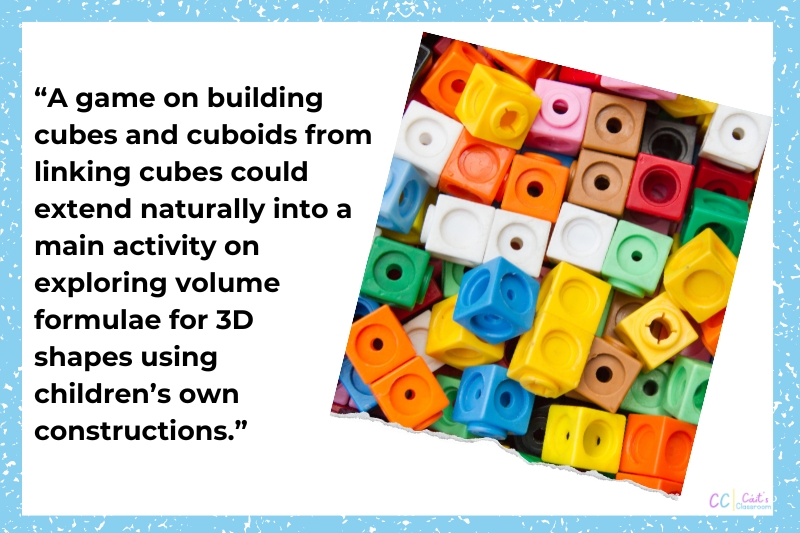
Tip #3: Make Maths Relevant
One of the best things about the new Primary Mathematics Curriculum is that it recognises the modern world in which our students live. Upper primary school students have high-powered calculators in their pockets in the form of smartphones, and accepting this reality opens up a whole new world for primary maths teaching.
You might wonder, “How can I take a more modern approach with older students to make maths more relevant?” The solution lies in how we interpret the learning outcomes. Instead of solely focusing on number operations, as has been common in the past, consider the real-life relevance of other strands in their own right.
For instance, once older students have mastered operations with decimal numbers, it’s time to move beyond operations in the money strand. As students progress through school, the learning outcomes of the new Primary Mathematics Curriculum allow us to delve into more meaningful mathematical concepts, like teaching personal financial literacy.
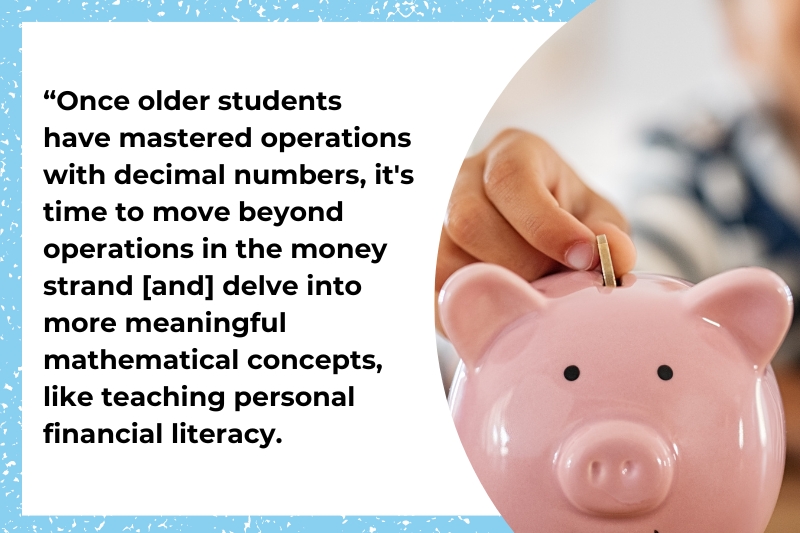
To wrap things up, tackling the new Primary Mathematics Curriculum as an NQT may feel like a big mountain to climb. But don’t worry – I’ve got you! Remember Tip 1: Embrace the Progression Continua, Tip 2: Keep Maths Playful, and Tip 3: Make Maths Relevant. With these three helpful tips in mind, you’ll be well on your way to mastering primary school mathematics in no time!
Enjoyed this blog? Join the Cáit’s Classroom email list to never miss a post!
